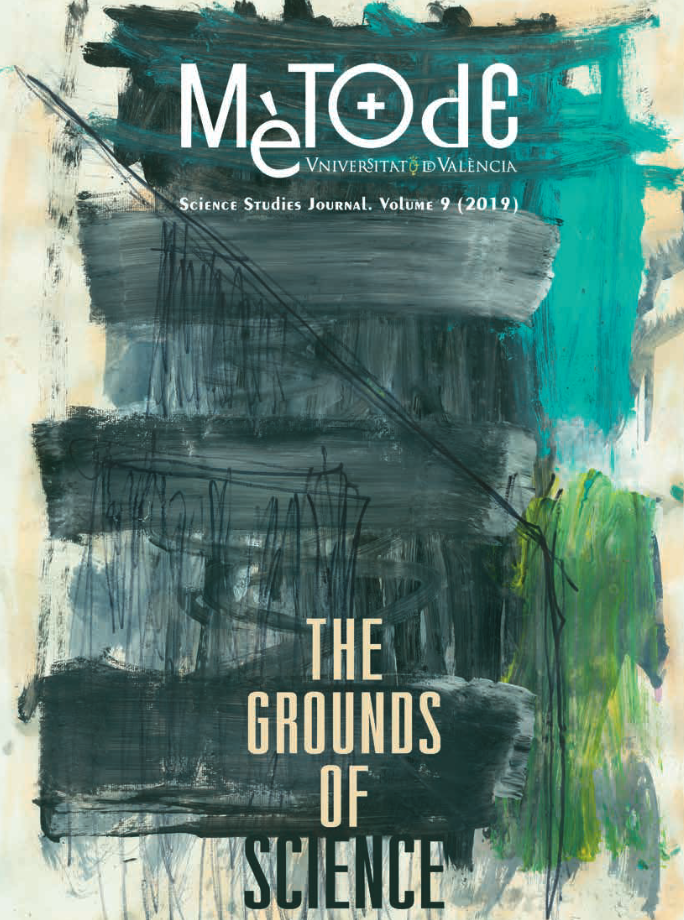Life in extreme conditions: The paradox of Antarctic marine biodiversity
DOI:
https://doi.org/10.7203/metode.9.11324Keywords:
marine biodiversity, conservation, Antarctica, benthos, gorgonia Abstract
Abstract
The study of pristine places is very important for learning about the state of the oceans before the impact of human beings. Due to the extreme environmental conditions of the Antarctic continental shelf – its distance from other continents, depth, and the weight of the continental ice – it offers us a great opportunity to better understand how a pristine ecosystem would normally be. In addition to a high level of biodiversity, Antarctic benthic organisms present patterns of demographic and spatial distribution that are different from the communities of the continental shelves in other seas and oceans of the world. This makes Antarctic benthic communities look, more than one might think, like the communities with the highest known biodiversity in the world.
 Downloads
Downloads
 References
References
Ambroso, S., Salazar, J., Zapata-Guardiola, R., Federwisch, L., Richter, C., Gili, J-M., & Teixidó, N. (2017). Pristine populations of habitat-forming gorgonian species on the Antarctic continental shelf. Scientific Reports, 7(1), 12251. doi: 10.1038/s41598-017-12427-y
Arntz, W. E., Brey, T., & Gallardo, V. A. (1994). Antarctic zoobenthos. Oceanography and Marine Biology Annual Reviews, 32, 241–304.
Aronson, R. B., & Blake, D. B. (2001). Global climate change and the origin of modern benthic communities in Antarctica. American Zoology, 41(4), 27–39. doi: 10.1093/icb/41.1.27
Clarke, A., Aronson, R. B., Crame, J. A., Gili, J-M., & Blake, D. B. (2004). Evolution and diversity of benthic fauna of the Southern Ocean continental shelf. Antarctic Science, 16(4), 559-568. doi: 10.1017/S0954102004002329
Gili, J. M., Arntz, W. E., Palanques, A., Orejas, C., Clarke, A., Dayton, P., ... López-González, P. J. (2006). A unique archaic epibenthic community of sessile passive suspension feeders in the high Antarctic. Deep Sea Research II, 53(8-10), 1029–1052. doi: 10.1016/j.dsr2.2005.10.021
Gili, J. M., Coma, R., Orejas, C., López-González, P. J., & Zabala, M. (2001). Are Antarctic suspension feeding communities different from those elsewhere in the world? Polar Biology, 24(7), 473–485. doi: 10.1007/s003000100257
Gutt, J. (2000). Some «driving forces» structuring communities of the sublittoral Antarctic macrobenthos. Antarctic Science, 12(3), 297–313. doi: 10.1017/S0954102000000365
Gutt, J., & Starmans, A. (1998). Structure and biodiversity of megabenthos in the Weddell and Lazarev seas (Antarctica): Ecological role of physical parameters and biological interactions. Polar Biology, 20(4), 229–247. doi: 10.1007/s003000050300
Lange, M., Ackley, S., Wadhams, P., Dieckmann, G., & Eicken, H. (1989). Development of sea ice in the Weddell sea. Annals of Glaciology, 12, 92–96. doi: 10.3189/S0260305500007023
Martinez-Dios, A., Dominguez-Carrió, C., Zapata-Guardiola, R., & Gili, J. M. (2016). New insights on Antarctic gorgonians’ age, growth and their potential as paleorecords. Deep Sea Research Part I: Oceanographic Research Papers, 112, 57–67. doi: 10.1016/j.dsr.2016.03.007
Thomas, D. N., & Dieckmann, G. S. (2002). Antarctic Sea Ice–A habitat for extremophiles. Science, 295, 641–644. doi: 10.1126/science.1063391
Downloads
Published
How to Cite
-
Abstract1684
-
PDF854
Issue
Section
License
![]()
All the documents in the OJS platform are open access and property of their respective authors.
Authors publishing in the journal agree to the following terms:
- Authors keep the rights and guarantee Metode Science Studies Journal the right to be the first publication of the document, licensed under a Creative Commons Attribution-NonCommercial-NoDerivatives 4.0 International License that allows others to share the work with an acknowledgement of authorship and publication in the journal.
- Authors are allowed and encouraged to spread their work through electronic means using personal or institutional websites (institutional open archives, personal websites or professional and academic networks profiles) once the text has been published.





